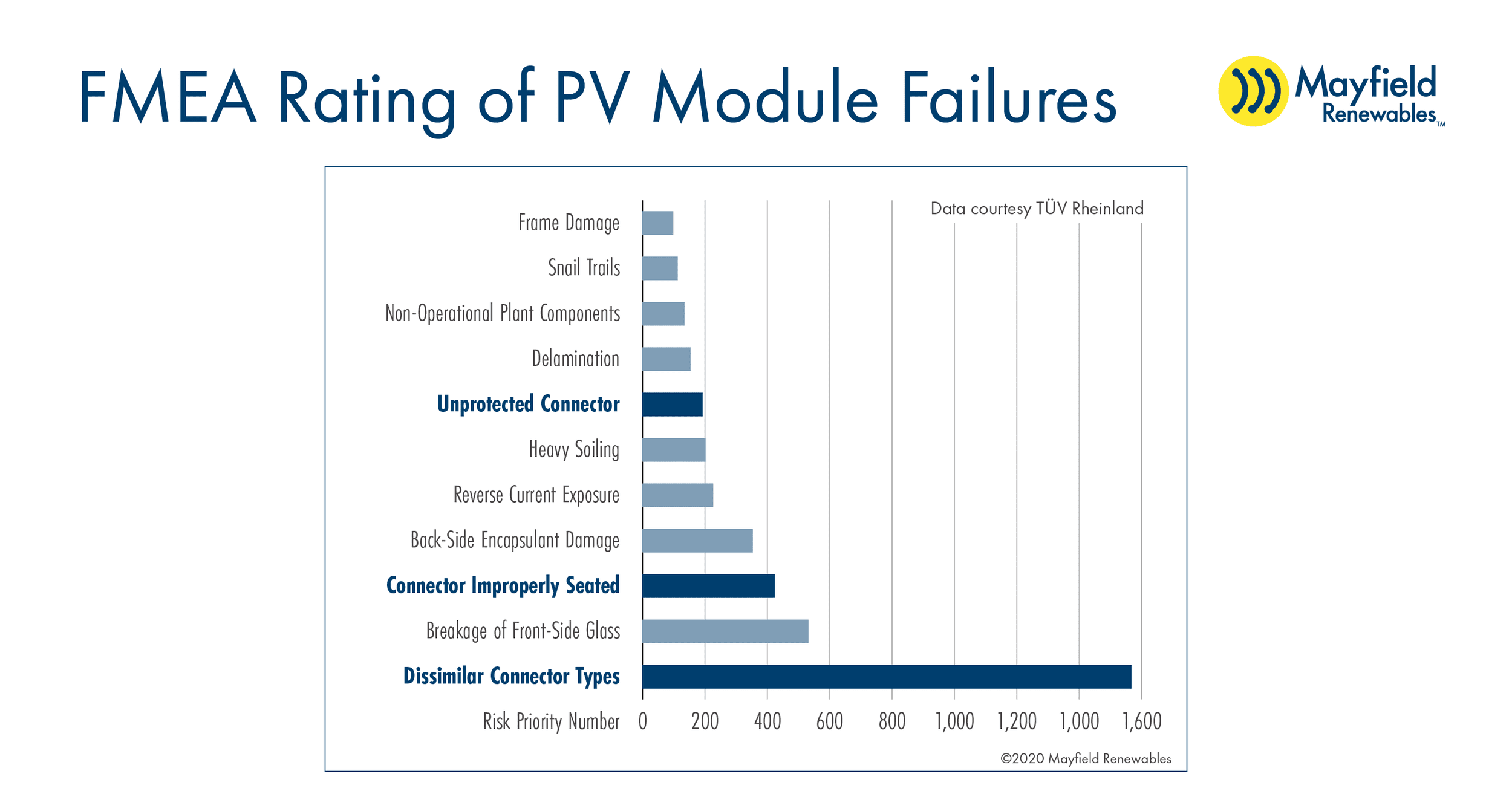PV Connector Mating and Intermatability in NEC 2020
The solar industry’s most dangerous misconception might be the deeply flawed notion of PV connector “compatibility.” As part of the 2020 round of revisions, the Code-Making Panel responsible for Article 690 in the National Electrical Code introduced language intended to reduce performance and safety risks associated with PV module connectors.
If your jurisdiction has already adopted NEC 2020, overlooking this seemingly small requirement could prove consequential and costly. Because of the intrinsic life safety and professional liability implications, industry stakeholders operating under previous Code editions would be wise to plan ahead for the eventual adoption of these changes. Here is a brief overview of the problem, relevant Code requirements, and ways to mitigate risks.
Not surprisingly, module connectors are a common failure point in a solar electrical system. There are more connectors, after all, than modules or power converters or overcurrent protection devices. This is especially true with the advent of module-level rapid shutdown, which roughly doubles or triples connector quantities in roof-mounted systems. Nevertheless, not all PV connector failures are created equally.
As part of a technical assessment of solar project risk, TÜV Rheinland evaluated different PV module failure modes—according to severity of effects, likelihood of occurrence, and detectability—and ranked PV module failures according to a risk priority number. According to the results of this Failure Modes and Effects Analysis (FMEA), failures associated with dissimilar connectors represent the single greatest risk to PV system performance and safety. Walmart’s now-settled lawsuit against Tesla, which hinged in part on roof fires and incompatible module connectors, illustrates the high stakes associated with dissimilar connectors.

To understand why mating different types of connectors is such a problem, it is important to recognize that no universal PV connector standard exists. Each product manufacturer designs and builds PV connectors to its own specifications. Housings from different vendors are made out of different materials; the electrical contacts are made out of dissimilar metals; there are no standard product dimensions or tolerances. These differences lead to failures, some of which lead to fires.
Industry experts have long been aware of the problems associated with mating incompatible PV connectors. Incident investigators and first responders have documented these failures in the field. Testing laboratory personnel have studied connector failure modes and root causes. Trade publications and trainers have shined a light on this issue and shared best practices.
The problem persists, in part, because of misleading advertising. It is not uncommon for module or module-level power electronics (MLPE) manufacturers to tout their PV module connectors as “MC-4 compatible” or similar. Unfortunately, connector “compatibility” is effectively meaningless. Granted, you can physically plug two “compatible” connectors together. However, a Nationally-Recognized Testing laboratory has not assessed and validated the quality, reliability, and safety of this electrical connection.
As a short-term solution to a persistent problem, the Code-Making Panel introduced language pertaining to connector mating and intermatability as part of NEC 2020. Specifically, Section 690.33(C) states that: “Where mating connectors are not of the identical type and brand, they shall be listed and identified for intermatability, as described in the manufacturer’s instructions.” Explanatory text in the NEC 2020 Handbook notes: “The term intermatability is used in UL 6703, Connectors for Use in Photovoltaic Systems.”
In the long-term, this Code change may lead to a much-needed industry standard for PV connectors. If everyone builds and tests mating connectors to the same product safety standard, intermatability is all but guaranteed. Problem solved. Unfortunately, changes to product safety standards are often slow in coming.
In the meanwhile, the simplest way to meet the new NEC 2020 requirements in 690.33 is to ensure that connectors on PV modules are the same type and brand as connectors on MLPE devices and DC string conductors. Prior to NEC 2020, plan checkers and field inspectors were unlikely to evaluate PV connectors for intermatability. Installers should not only expect additional scrutiny going forward but also should take immediate steps to mitigate risks associated with dissimilar PV connectors.










